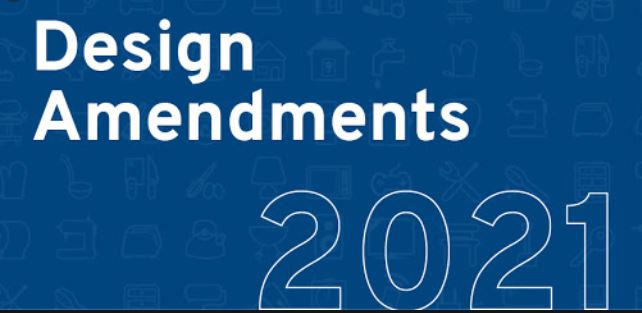Benefits arising from new design rules 2021

In furtherance to the Draft rules published in 2019, the government of India on January 25, 2021, issued a gazette notification to formalize and introduce the Designs (Amendment) Rules, 2021.
Startups and small companies seeking to secure design registrations will greatly benefit from India’s newest changes to its Design Rules. ‘Startups’ are now accepted as a separate category of applicants by the revised Design Rules and have lowered the total filing and prosecution costs for small entities.
The said amendments are in line with the amendments made to the Patent Rules and various other initiatives taken by the government to promote entrepreneurship and in particular, startups in India. The Patents (Second Amendment) Rules, 2020, notified in November 2020, reduced the filing and prosecution costs for applicants who were startups and small entities.
By virtue of power conferred under section 47 of the Designs Act, the Central Government has come up with such amendment. Previously, few amendments were bought to the principle Design Rule of 2001 but by implementing Design Rules 2021, India has now formally adopted the Locarno Classification, Overall, the present amendments will make intellectual property protection affordable as well as accessible to various classes of business, mainly to Startups and Micro, Small & Medium Enterprises.
Enforcement of New Rule
In India, design classification is provided under design rules. This previously established Design Rule and Classes was based on the 10th edition of Locarno Classification. In its previous edition many designs remained uncovered. After becoming signatory to Locarno Agreement, India has adopted the latest edition of Locarno Agreement and has made its Designs Rule in compliance with 13th Edition of Locarno Classification. Currently, various classes for articles have been included in this Edition.
Key Changes introduced
Major changes that are introduced by the Design Amendment Rules of 2021 are as follows:
• Addition of new category
A new category of Applicant has been introduced which is “startup”. Under Rule 2 of Design Act 2002, new clause (eb) is included that provides the definition of startup. According to Rule 2(eb) of the Design Rules 2021, Startup is an entity that is recognized by a competent authority as “startup” within Startup India initiative and in relation to foreign entity, startup can be any entity that fulfills the criteria of turnover and period of incorporation or registration according to Startup India initiative along with submitting declaration reflecting the same.
• Rule 4:
Under Rule 4, new proviso validates the communications over e-mails and registered mobile number of registered agent or applicant registered in India.
• Rule 5
Sub-rule (2) (e) of Rule 5 states that where an application which is initially instituted by natural person or startup or small entity or together by them if transferred partly or as whole to category of person other than natural person, startup or small entity, the difference aroused in term of fee between what is paid by category of person including natural person, startup, small entity and category of person other than natural person is meant to be paid by the new applicant.
Further, clause (f) under this rule has been omitted.
• Rule 10
Rule 10 has introduced very significant change in the sphere of design classification. As per new Rule 10, article applied for registration should be classified according to the latest edition of International Classification for Industrial Designs that is the 13th edition of Locarno Classification. Applicant of Design needs to classify their article as per the 13th Edition of Locarno Classification issued by World Intellectual Property Organization on 1st of January 2021 till any further classification comes into effect.
However, a condition has been imposed thereupon. To qualify for design registration criteria laid down under Designs Act, 2000 must be fulfilled specifically under section 2(a) and 2(d) of the Act.
• Change in Fee Structure of different categories of Applicants
This change has sounded very positive for Micro, Small, medium enterprises. The MSME category has now been included in the realm of natural persons. Now, they have to pay comparatively less amount for getting their design registered which is equal to the amount paid by category of natural persons i.e. INR 1000.
Conclusion
In conclusion, the author believes that the amendments bought in the Rules would have a positive effect on India’s design framework as they relatively streamline the process of filing design applications. With the reduced fees and the harmonization of the classes and sub-classes in force with the Locarno Classification released by the WIPO, which offers a certain degree of consistency between the various technical design works, the applicant will feel encouraged to file application for designs registration, in particular for start-ups and small entities.